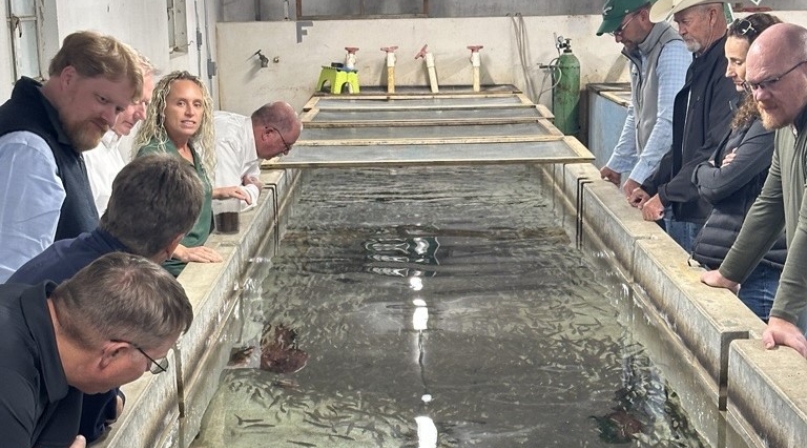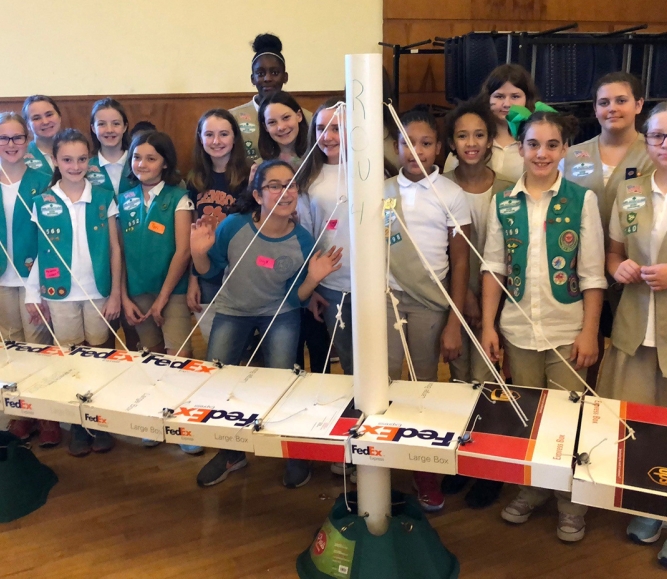County’s fish hatchery offers lessons for high school students

Every day, 40 Stevens County, Wash. teenagers leave school to tend to another school.
Thanks to the county’s purchase of a local fish hatchery, Colville High School offers classes in natural resource management that teaches students math, practical skills raising and caring for fish, and offers them the chance to be a part of a coming milestone in regional wildlife.
“It was an unplanned acquisition,” said Tami Mills, the fish hatchery and applied math teacher at Colville High School. “But it was one that our community made happen.”
Stevens County Commissioner Wes McCart, president of NACo’s Western Interstate Region (WIR), said the state Fish and Wildlife Commission had closed the hatchery and planned to dispose of the property after consolidating hatchery operations in Spokane County, but in 2013, residents recalled that the county had given the state the land 80 years prior, which gave the county the right of first refusal.
“All we have to do is pay for major improvements, the school ends up paying the mortgage on the building,” he said.
That’s where the story takes a turn. That payment isn’t made with traditional currency. It’s an in-kind payment of $10,500.
“It’s a little bit of an accounting nightmare,” McCart said, “but every year we make the payment in fish.”
Dr. Seuss can take a break from counting fish individually — the state buys the fish by weight.
At $4 a pound, that’s 2,625 pounds to get to that $10,500 payment — regardless of whether they’re red fish or blue fish.
The school sells surplus fish to local landowners to stock local lakes and raise additional money, for $5 per one-pound fish.
That helps defray some of the operating expenses for the facility, which includes 19 acres.
The investment is worth it for the 40 students, mostly seniors, who take Fish and Wildlife Management, which is part of the school’s career and technical education curriculum.
Part of the class is theory — conservation, ecology, biology, endangered species studies, wildlife diseases and career exploration. There’s enough material there for two years of class, Mills said.
The other part is hands-on work with the fish — feeding them, monitoring water quality and maintaining equipment, all working in groups.
“I tell the students that what we do is a little unrealistic,” she said.
“When you work at a hatchery, it’s usually one guy cleaning, another guy’s feeding, another guy’s welding pipe so you’re doing a lot on your own, but they learn well in groups. And they love the teamwork.”
Mills knows. Her family owned a trout farm in King County, and she worked there in the summers after they moved to Stevens County.
She later worked for the state as a seasonal hatchery technician at another local hatchery while working as a teaching assistant.
When the county acquired the hatchery, she used her skills to help train the teacher assigned to the class, who she later succeeded.
Mills still spends her winter break helping a state hatchery in Spokane County during spawning season, which earns the school a donation of 50,000 fish eggs per year.
McCart celebrates the surreptitious learning the class offers.
“I’m a math major myself, but I know that people can just get a roadblock when you bring up numbers,” he said.
“But in this class, they’re applying math in the process of doing something else. You have to count the fish, you have to weigh the fish, you calculate how much they weigh and how much food they need, but it’s all part of a process, not just abstract work.”
Mills concurs.
“They feel like they’re not at school,” she said.
McCart also takes pride in a handful of Colville alumni who have found work in the wildlife and natural resources field, given its regional prominence.
He showed off the hatchery to WIR members who were in town in October for the Board of Directors meeting.
The continued success of the hatchery is opening the doors for the students to play a part in reintroducing salmon to the Columbia River, which has been blocked to the species since the Grand Coulee Dam was built — nearly as long as the Colville Hatchery has been in operation.
“I was at a meeting the other day with members of different tribes and they said they wanted to develop another hatchery to raise salmon and I asked them why not look just eight miles from the river in Colville,” he said.
“They’re very interested in looking at the hatchery and exploring the idea of raising salmon there for the reintroduction,” he noted. And Colville High School students would be a part of that historic effort.
Related News

Congress reauthorizes Economic Development Administration for first time in 20 years
The agreement reauthorizes the Economic Development Administration (EDA) for the first time in 20 years.

Counties Applaud Passage of WRDA/EDA Package
Omnibus package will advance county interests in economic development, water infrastructure
County News
Building its workforce: S.C. county recruits STEM students


